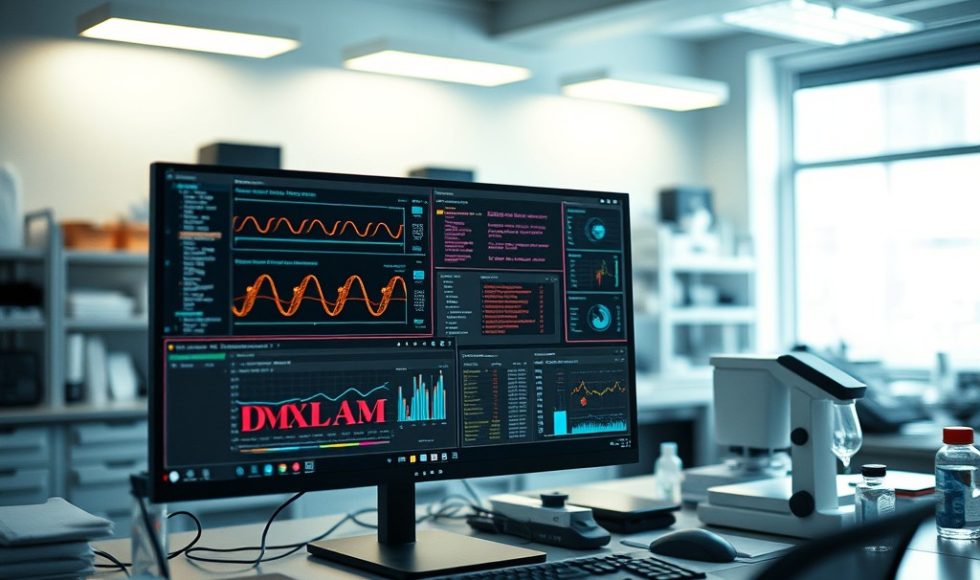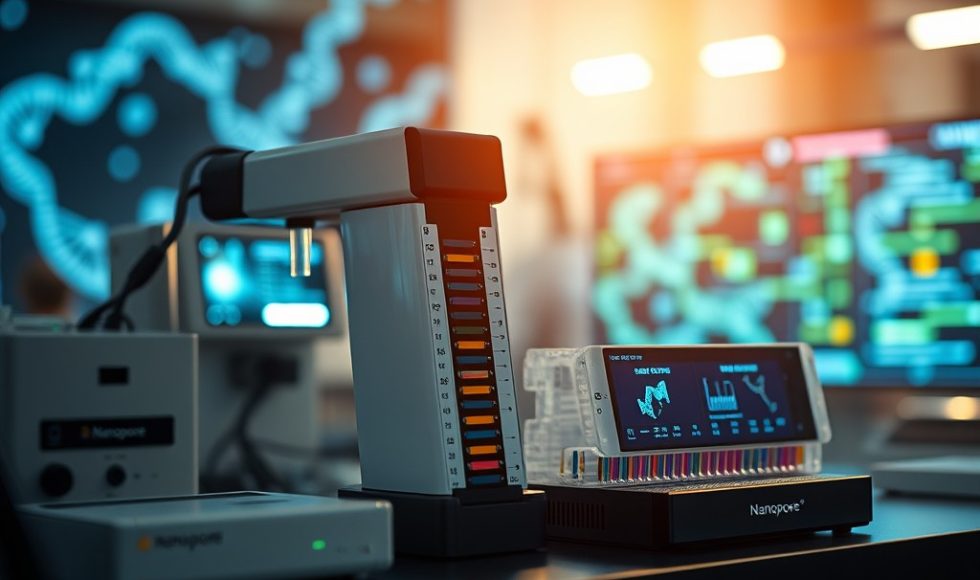Thydian Windsor, a Research Scientist in the Machine Learning team at Oxford Nanopore Technologies, gave the secondary analysis update at the Nanopore Community Meeting. They defined secondary analysis as “what does the collection of reads say in aggregate?” For variant calling, improvements on the base-calling side with base-calling models and motor enzymes have been released. […]
Katherine Lawrence, from the Machine Learning and Bioinformatics team at Oxford Nanopore Technologies, spoke at the Nanopore Community Meeting on “Bacterial isolate and plasmid sequencing.” Lawrence began by emphasizing the importance of microbes and learning about their sequences. Long reads help assemble bacterial genomes efficiently. Bacterial genome modifications include 4mC, 5mC, and 6mA. Lawrence noted […]
We’ve been discussing the direct RNA sequencing kit and process in class. Tonight, I watched Bronya Boydon, Machine Learning Bioinformatician with Oxford Nanopore Technologies, provide the “Direct RNA basecaller update” as part of the Nanopore Community Meeting. Boydon described how RNA is translocated through the pore. Direct RNA has the benefits of long reads, simplicity, […]
Mike Vella, Senior Director of Machine Learning for Oxford Nanopore Technologies, provided an update on Dorado at the Nanopore Community Meeting in Boston. Vella explained that Dorado “powers Nanopore base-calling” by converting the raw signals into sequences. Stand-alone Dorado is a command-line tool. Dorado is also integrated into MinKNOW. Vella announced that among the updates, […]
David Yarmosh from ATCC presented at the Nanopore Community Meeting in Boston. The session’s title was intriguing: “How good is good enough?” Yarmosh is a bioinformatician with ATCC. They noted that the ATCC was founded in 1925 and now has nearly 5,000 genomes. Yarmosh explained that they are doing about 1,000 genome assemblies per year. […]
Michael Dean from the National Cancer Institute presented at the Nanopore Community Meeting in Boston on “Diverse structural variants cluster near breakage-fusion-bridge site in cancer genomes.” Dean spoke about oncogene amplification and the need for high-quality cancer genomes for SV analysis. They have developed a standard extraction method with size selection to obtain long reads. […]
Ela Sauerborn from the Helmholtz Al Institute in Munich, Germany, presented at the Nanopore Community Meeting on the “Detection of hidden antibiotic resistance through real-time genomics.” They spoke about a specific case they published on complex pneumonia. Real-time genomics in the clinical microbiology lab is of interest. Sauerborn talked about the increase in carbapenem-resistant Enterobacteriales. […]
Ana Peres from UNC-Chapel Hill presented at the Nanopore Community Meeting on “Unraveling gene expression patterns in pediatric germ cell tumors: a nanopore sequencing approach.” They spoke about how rare pediatric tumors are and the differentiation stages. Germ cell tumors can occur in the gonads and along the midline of the body. Peres and team […]
I watched Christian Gallardo from the Seattle Children’s Research Institute present at the Nanopore Community Meeting tonight. The title of the five-minute session was “Decoding the spliced HIV-1 transcriptome with accurate long-read RNA sequencing.” They described HIV as a retrovirus that infects CD4 T-cells and behaves like a gene upon integration. Gene expression is regulated through splicing. […]
Wanqing Shao from Boston Children’s Hospital presented at the Nanopore Community Meeting on “Maximizing the power of genomic sequencing in pediatric rare disease.” Shao is a Genomics Scientist working in a collaborative team: the Children’s Rare Disease Collaborative (CRDC). They are interested in rare and complex diseases that are often misdiagnosed. Shao also noted that […]











